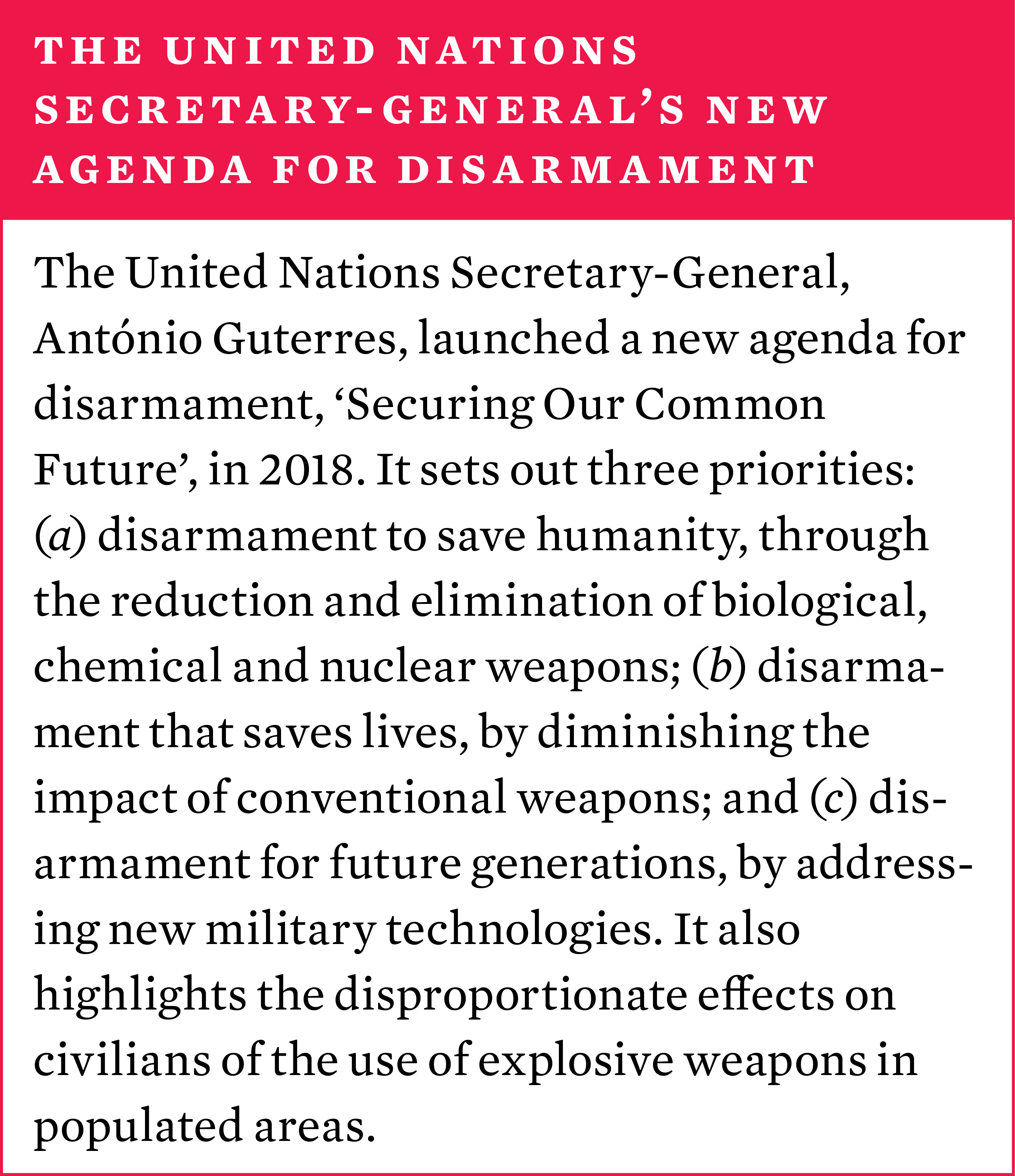9. Global instruments for conventional arms control
Overview, Ian Davis [PDF]
I. The Convention on Certain Conventional Weapons and lethal autonomous weapon systems, Vincent Boulanin, Ian Davis and Maaike Verbruggen [PDF]
II. Anti-Personnel Mines and Cluster Munitions, Ian Davis [PDF]
III. Control measures on small arms and light weapons, Mark Bromley [PDF]
IV. The UN Secretary-General’s launch of a new disarmament agenda, Sibylle Bauer [PDF]
V. Cyber arms control and resilience, Eneken Tikk [PDF]
The CCW Convention and lethal autonomous weapon systems
In 2018, efforts to regulate lethal autonomous weapon systems (LAWS) continued to be made within the framework of the 1981 Convention on Certain Conventional Weapons (CCW Convention). For the second year, discussions on LAWS took place within a Group of Governmental Experts (GGE) and focused on: (a) the characterization of LAWS; (b) the human element in the use of force and aspects of human-machine interaction; (c) potential military applications of related technologies; and (d) options for addressing the humanitarian and international security challenges posed by emerging LAWS technologies. There was no agreement on the way forward, but the mandate of the GGE was extended into 2019.
United Nations Programme of Action on small arms and light weapons
The Third Review Conference of the 2001 United Nations Programme of Action (UNPOA) on small arms and light weapons took place in June 2018. On two issues—linkages to some of the sustainable development goals (SDGs) and ammunition—the outcome document built on earlier advances and included language that increases the scope and relevance of the UNPOA. However, the persistence of previous divisions prevented the adoption of new language on arms transfers to non-state actors.

Cybersecurity
There were over 250 state-sponsored cyberattacks in the period 2005–18. However, after two decades of UN discussions on cybersecurity, there is little common ground on the nature of the threat and the measures required to address it. States are polarized around two positions. First, a mainly Western group of states regards the proliferation of information and communication technologies (ICTs) as a positive tendency and considers existing international law sufficient for guiding state behaviour in cyberspace. Second, a group of countries led by China and Russia regards digitalization as a threat and would prefer new normative guidance on state use and development of ICTs. With no international consensus on a way forward, several regional organizations, such as the Euro-pean Union, the North Atlantic Treaty Organization, the Organization for Security and Co-operation in Europe and the Association of Southeast Asian Nations, have made significant progress. There have also been important national and corporate initiatives.